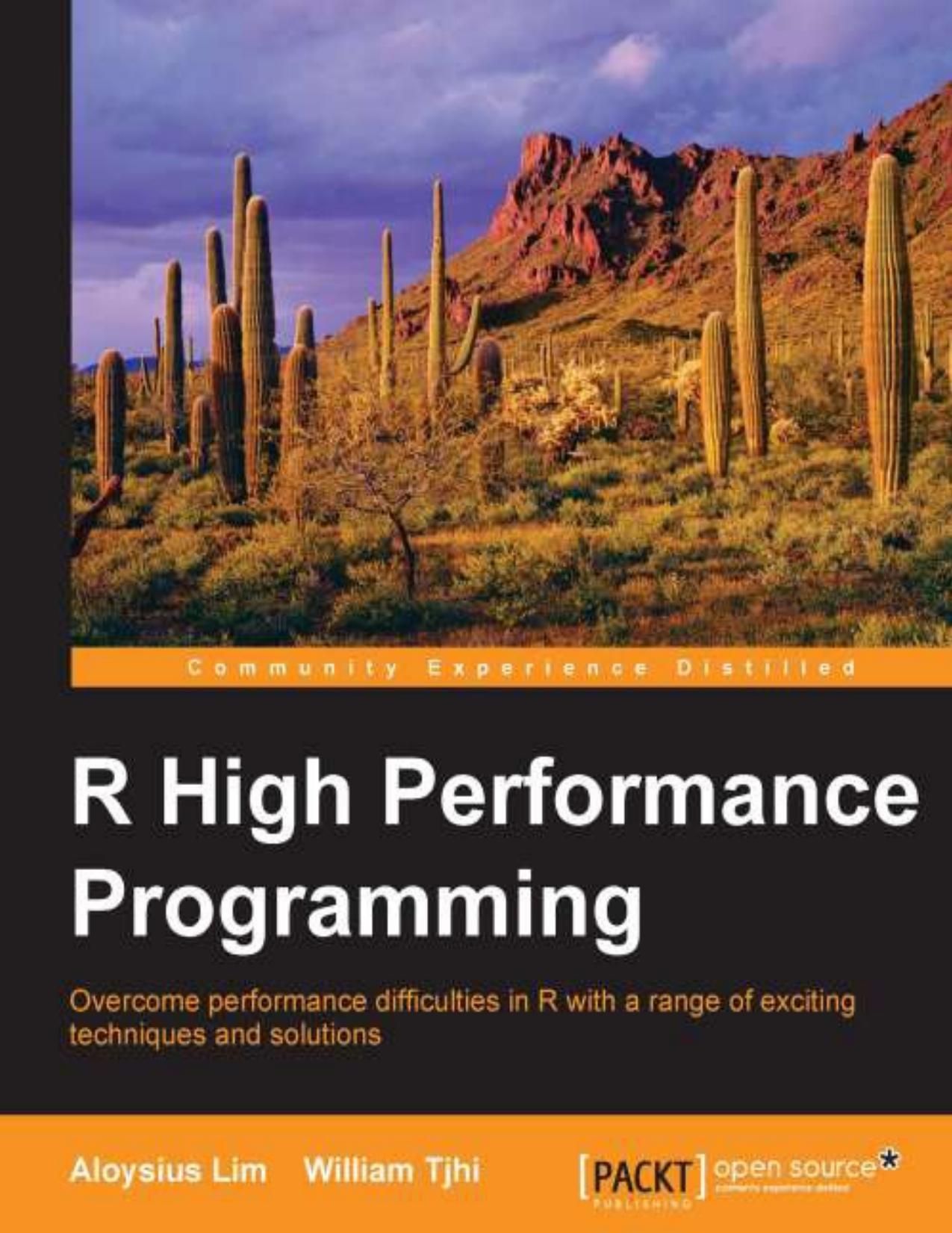R High Performance Programming 1st edition by Aloysius Lim, William Tjhi ISBN 1783989270 9781783989270
$70.00 Original price was: $70.00.$35.00Current price is: $35.00.
Instant download R High Performance Programming Aloysius Lim after payment
R High Performance Programming 1st edition by Aloysius Lim, William Tjhi – Ebook PDF Instant Download/Delivery: 1783989270, 9781783989270
Full download R High Performance Programming 1st edition after payment

Product details:
ISBN 10: 1783989270
ISBN 13: 9781783989270
Author: Aloysius Lim, William Tjhi
With the increasing use of information in all areas of business and science, R provides an easy and powerful way to analyze and process the vast amounts of data involved. It is one of the most popular tools today for faster data exploration, statistical analysis, and statistical modeling and can generate useful insights and discoveries from large amounts of data.
Through this practical and varied guide, you will become equipped to solve a range of performance problems in R programming. You will learn how to profile and benchmark R programs, identify bottlenecks, assess and identify performance limitations from the CPU, identify memory or disk input/output constraints, and optimize the computational speed of your R programs using great tricks, such as vectorizing computations. You will then move on to more advanced techniques, such as compiling code and tapping into the computing power of GPUs, optimizing memory consumption, and handling larger-than-memory data sets using disk-based memory and chunking.
R High Performance Programming 1st Table of contents:
1. Understanding R’s Performance – Why Are R Programs Sometimes Slow?
Three constraints on computing performance – CPU, RAM, and disk I/O
R is interpreted on the fly
R is single-threaded
R requires all data to be loaded into memory
Algorithm design affects time and space complexity
Summary
2. Profiling – Measuring Code’s Performance
Measuring total execution time
Measuring execution time with system.time()
Repeating time measurements with rbenchmark
Measuring distribution of execution time with microbenchmark
Profiling the execution time
Profiling a function with Rprof()
The profiling results
Profiling memory utilization
Monitoring memory utilization, CPU utilization, and disk I/O using OS tools
Identifying and resolving bottlenecks
Summary
3. Simple Tweaks to Make R Run Faster
Vectorization
Use of built-in functions
Preallocating memory
Use of simpler data structures
Use of hash tables for frequent lookups on large data
Seeking fast alternative packages in CRAN
Summary
4. Using Compiled Code for Greater Speed
Compiling R code before execution
Compiling functions
Just-in-time (JIT) compilation of R code
Using compiled languages in R
Prerequisites
Including compiled code inline
Calling external compiled code
Considerations for using compiled code
R APIs
R data types versus native data types
Creating R objects and garbage collection
Allocating memory for non-R objects
Summary
5. Using GPUs to Run R Even Faster
General purpose computing on GPUs
R and GPUs
Installing gputools
Fast statistical modeling in R with gputools
Summary
6. Simple Tweaks to Use Less RAM
Reusing objects without taking up more memory
Removing intermediate data when it is no longer needed
Calculating values on the fly instead of storing them persistently
Swapping active and nonactive data
Summary
7. Processing Large Datasets with Limited RAM
Using memory-efficient data structures
Smaller data types
Sparse matrices
Symmetric matrices
Bit vectors
Using memory-mapped files and processing data in chunks
The bigmemory package
The ff package
Summary
8. Multiplying Performance with Parallel Computing
Data parallelism versus task parallelism
Implementing data parallel algorithms
Implementing task parallel algorithms
Running the same task on workers in a cluster
Running different tasks on workers in a cluster
Executing tasks in parallel on a cluster of computers
Shared memory versus distributed memory parallelism
Optimizing parallel performance
Summary
9. Offloading Data Processing to Database Systems
Extracting data into R versus processing data in a database
Preprocessing data in a relational database using SQL
Converting R expressions to SQL
Using dplyr
Using PivotalR
Running statistical and machine learning algorithms in a database
Using columnar databases for improved performance
Using array databases for maximum scientific-computing performance
Summary
10. R and Big Data
Understanding Hadoop
Setting up Hadoop on Amazon Web Services
Processing large datasets in batches using Hadoop
Uploading data to HDFS
Analyzing HDFS data with RHadoop
Other Hadoop packages for R
Summary
Index
People also search for R High Performance Programming 1st:
a r performance
b.r.o high school
high performance alloys tipton
high performance programming model
high performance programming
Tags:
Aloysius Lim,William Tjhi,R High,Performance Programming


